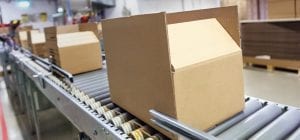Packaging Trends and the Role of Technology
Between 2018 and 2028, the global packaging market is set to expand by almost 3% per annum, reaching over $1.2 trillion, according to research by Smithers. In the consumer packaging industry, in particular, volume of units grew substantially during the COVID-19 pandemic as home-centric lifestyles and home-working models became the norm. Even with the hopeful return to “normal,” research firm Euromonitor International forecasted in August 2021 a 2.3% compound annual growth rate (CAGR) for consumer packaging from 2020 to 2025.
Consumers and suppliers alike drive the need for new and innovative packaging. Trends like ease of storage, sustainability, convenience of opening, shelf appeal, amount of material and weight all play into the need for new and efficient packaging.
Trends in Packaging
As Millennials and Generation Z continue expanding into the workforce and their purchasing power increases, sustainability, recycling and environmental issues will increasingly command center stage. Three-quarters of Gen Z consumers said that sustainability was more important to them than the brand name when making purchase decisions, according to a 2021 survey conducted by First Insight and the Baker Retailing Center at The Wharton School of the University of Pennsylvania.
Consumers are becoming more conscious about their shopping habits. They are increasingly looking for sustainable products and companies that share similar ideologies.
In the last couple of years, we’ve seen a number of trends in support of a greater demand for sustainable packaging supplies. From zero-waste packaging to sustainable packaging that can be repurposed, earth-friendly packaging supplies are expected to continue to boom in popularity and produce greater demand from consumers.
Shoe brand Rothy’s manufactures machine-washable footwear made from plastic water bottles. Rather than shipping a box within a box, the shoeboxes are the vehicle for both shipping and returns. The company’s vegan, biodegradable boxes are made from 85% post-consumer recycled materials.
Another example of a sustainable company is Blueland. What started off as a Shark Tank proposal has burgeoned into a successful eco-friendly company that produces sustainable cleaning products. Blueland offers the purchase of a one-time reusable bottle that can be refilled on an as needed basis, with non-toxic dissolvable cleaning tablets. Rather than throwing away the plastic bottle after you’re done with a cleaner, you can use the Blueland bottle repeatedly. The use of their dissolvable cleaning tablets with the water you’re already using in your home, cuts down on waste. In addition, every part of its packaging is recyclable, and the tablet wrappers are compostable and biodegradable.
The Role of Technology in Packaging Manufacturing
But, what goes into the work behind the scenes at packaging manufacturing facilities to get a glass jar or cardboard box from the factory floor onto retailers’ shelves? What role does technology play here?
Packaging is a key industry vertical of focus at Parsable, and Connected Worker® by Parsable is deployed across a number of globally recognized packaging companies.
At one large packaging manufacturer, Parsable was engaged to kickstart digitization efforts at a new plant location. The new plant would replicate an existing plant in terms of product, processes and equipment. The packaging company faced tight timelines and struggled to train and onboard new workers. On top of that, the company wanted to reduce their reliance on paper-based procedures and having to manually record human and machine data on paper ledgers.
Parsable was leveraged to standardize processes across both the new and existing plants.
The company assigned a lean team to quickly digitize procedures across production, quality, maintenance and the warehouse logistics.Templates were created, tested and revised within two weeks. The templates would become the building blocks for deployment at the new plant, and would ensure consistent standards and quality among workers, in line with operations at the original plant.
As time got closer to opening the new plant, recruiting new talent became a challenge. The original plant struggled with high employee turnover. To make things worse, the team failed to create an efficient onboarding process. This meant every new hire would require the training and attention from an existing veteran employee – which happened quite frequently. It now became the veteran employees’ responsibility to make sure new employees were sufficiently trained with the right techniques, processes and skills to get the job done.
With the aid of modern digital tools, organizations can capture and record the tacit expert knowledge of veteran workers, which can make retirement and onboarding of new hires more seamless.
With Connected Worker, workers are provided with real-time data and multimedia work instructions on mobile devices. Digital procedures are enhanced with photos and videos, to ensure best practices are being followed throughout the plant so workers can complete the job safely and efficiently every time. Now, the valuable tacit knowledge from the veteran workforce is captured and shared with the new hires. The company noted a 40% reduction in onboarding time at the new plant.
Another indication of technology’s important role in recruiting: An employee posted a job description that highlighted using the new Connected Worker Platform to accomplish work activities. Not only did the new job description attract more Millennial applicants, but once new hires joined the team they had a more productive and engaging way to undergo onboarding training and to ensure daily work tasks were done right the first time.
As the new plant was getting off the ground, processes were replicated in Parsable’s platform to streamline production. Managers could now tap into valuable analytics and insights, without having to be physically present at the plant. Parsable has allowed this packaging company to finally have a full picture of what is happening at their factories down to the worker level, driving operational efficiency.
Ready to revolutionize your operational workflows? Experience the power of Parsable’s Connected Worker® software firsthand. Schedule a demo today and discover how our solution can streamline your operations by digitizing your frontline.






